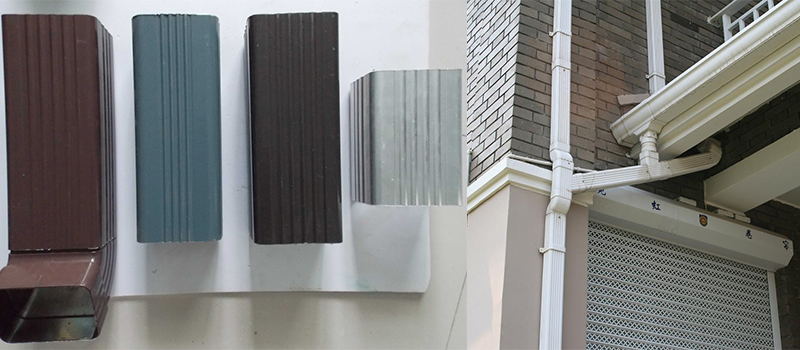Leakage analysis of downpipe
Leakage analysis of downpipe:
Leakage in the downpipe may be due to the following reasons:
1. At the junction of the roof gutter and the drainage outlet, leakage is quite common due to poor waterproof construction quality, cracks caused by the aging of the waterproof layer, or obstruction of debris blocked by drainage.
2. The rectangular drain is welded with steel plates. When the short-neck tube and the rain bucket are installed, there is a general center deviation, which causes splashing, hooking, or even outflow of drainage. The processing angle of some crutches is also unreasonable (should be slightly more than 900), and there is a phenomenon of choking water.
3. The interface of the iron-coated steel coiled pipe is generally connected by a direct plug-in type, and the longitudinal support capacity of the pipe clamp bracket is insufficient. It is often because of its looseness, skew, sag, and dial-out, which makes the interface easy to disconnect and sewage. Diffuse wall surface. Some moss breeds for a long time, which not only affects the discharge of rainwater, but also tarnishes the appearance of architectural decoration. This kind of problem is very common, especially when the downspout is close to the balcony or window, it often wets the furniture and makes the residents complain.
4. The outlet of the downpipe is generally 200mm away from the ground, and it is 45 degrees out. However, it is often seen that the lower part of many downpipes is damaged or lost, which makes the actual outlet too high from the ground, resulting in rapid erosion of drainage, which will be harmful to the building in the long run.
5. Improper setting or arbitrary modification of the downpipe, endangering the safety of the building. The investigation found that some of the downspout outlets were located right at the spreading expansion joints; some of the outlets had natural ground slopes or piled up garbage, resulting in poor drainage, water seepage, and often subsidence of the ground, subsidence of the foundation, and scattered water. Cracks, wall cracks, etc.; during installation, some water pipes are randomly moved, modified, or even cancelled, resulting in different lengths, slopes, and directions of the original designed gutters on the roof, and uneven loading of each drainage riser; In some cases, the drainage pipe is introduced into the outdoor cellar well, but the well chamber is small and shallow, the water flow is circulated, or the downstream pipe diameter is too small, forming a cellar well.







